Bravely Default Flying Fairy HD Remaster follows Agnes Oblige, a young woman who is the Vestal of the Wind Crystal, one of the four elemental crystals that govern the world. When the Wind Crystal is covered by a potent darkness that stills the wind, Agnes is forced out into the world to try to find the cause. Along the way, she joins up with Tiz, a young man whose hometown was destroyed; Ringabel, a charming playboy with amnesia and a future-telling book; and Edea, the daughter of the Grand Marshall who is seeking to stop Agnes from saving the crystals. The four must venture together, save the crystals, and figure out why Edea's father is so dedicated to stopping them from saving the world.
Bravely Default is a fun adventure story that's very much in the vein of older SNES RPGs. The characters are simple but charming, it's frequently funny, and it has a couple of nice plot twists that keep things interesting. It suffers from some writing flaws, such as an inability of characters to communicate, but that doesn't really detract from the whole. As a warning, the game does get rather dark at times, which can easily catch players off guard due to the cute visuals, so be prepared for some serious subject matter.
The easiest way to describe Bravely Default is that it's a SNES-era Final Fantasy game that's a bit modernized. This isn't even a hypothetical connection. Despite the name, Bravely Default uses jobs, spells and items from Final Fantasy and includes direct connections to the obscure Final Fantasy: 4 Heroes of Light.It's an old-school RPG in a lot of ways, from random encounters to dungeon crawls to limited save points and healing, but that gives it a pleasant niche to stand out among modern RPGs. It also avoids a lot of the problems of older RPGs, such as letting you adjust your random encounter rate.
The combat system in Bravely Default is the star of the show, and it is a genuinely excellent system. At first glance, it looks a lot like an old-school Final Fantasy combat system. You have a party of four characters, each of whom can be assigned various jobs that grant them skills and abilities. In many ways, it is a successor to Final Fantasy V, and it captures a lot of what makes that combat system fun. The ability to mix and match different abilities and skills goes a long way to allowing you to create distinct builds, ranging from a powerful monk who can steal from his foes to a white mage/merchant hybrid who can heal and use money to boost allies.
What adds some extra complexity to the system is the titular Brave and Default mechanics. On a character's turn, they are able to "Brave," which lets them take an extra action, up to four turns per action. However, doing this uses up "Brave Points," and if you go below zero Brave Points, then you miss your next turn, with 1 BP replenished during every turn. On the other hand, Default allows you to spend a turn defending to save your BP, which means you can build up stock to use later. Enemies can also Brave and Default, which means you need to be careful of enemies taking extra actions.
This adds some very cool push and pull to battles as you figure out where and when to attack, looking for gaps in enemy attack patterns to unleash hell while minimizing damage on your own. It takes an adjustment, but it makes boss fights a lot more fun as you learn the ins and outs of fights. As the game progresses and you get more skills and abilities, you also gain the ability to manipulate BP for your party or the enemy, which allows for even more intriguing strategies. Some skills may require BP to cast or change the amount of BP gained in a turn or more. If you love min-maxing and creating the ultimate builds, there's a whole lot to sink your teeth into.
Bravely Default's only problem is its story structure, which for reasons that are spoilery, gets very repetitive near the end. You get to fight some cool new version of bosses, and the endgame is neat enough to be worth it, but there's a part near the end of the game that drags on, and the remake doesn't do a ton to fix it — aside from allowing you to skip cut scenes. It's probably the biggest flaw of the game if you're not playing Bravely Default primarily for the mechanics, as the story grinds to a halt for a little while.
Bravely Default HD adds a number of nice new features. There's a new Full Heal button in the menu, which saves a ton of time topping up your party, the recommended levels for dungeons are displayed, and more information is given about what you get when leveling jobs, which makes it much easier to decide what to focus on. The game's Streetpass functionality, which is used for a minigame where you rebuild Tiz's destroyed hometown, has been replaced with Passing Souls, who inhabit cities and respawn every three hours or so. This is a nice improvement, since it means players will get access to a healthy supply of people to rebuild the town, rather than hoping you run into someone else who has the game.
The biggest new feature is two minigames: Ringabel's Panic Cruise and Luxencheer Rhythm Catch. Both of these are designed around the Switch 2's Mouse feature and must be played exclusively with it. Rhythm Catch is a simple rhythm minigame, where you have to match movements to "cheer on" the singing characters. Ringabel's Panic Cruise, the more enjoyable of the two, sets you at the helm of an airship. The dashboard is full of various gadgets and widgets, ranging from the steering wheel and altitude control to the radio and a fly swatter. Your mouse controls serve as your hands, and you have to keep the airship on course while satisfying the various demands of your party members. It's a cute game, but it wears out its welcome before too long.
The ability to set the game's encounter rate to 0% is locked behind the minigames. This is a change from the 3DS version, where it was unlocked by default . I can understand this change. The early parts of the game feel significantly different without the ability to turn off random encounters. Dungeons become more dangerous and involved, and resource management becomes more meaningful. I actually left and returned to a dungeon partway through to get extra resources, and it benefits the game to be forced to engage with mechanics. Disabling random encounters makes these mechanics meaningless or unimportant, so locking this ability actually improves the gameplay experience.
However, that doesn't change the fact that the ability to turn off random encounters was a feature in the 3DS version of the game, and locking it behind some firmly average minigames is a real drag — doubly so because the minigames require you to use the Switch mouse feature, which is surprisingly neat but does not play well with the portability of the game. It's a minor problem; it will probably take about 20 minutes to unlock once you reach that point, but locking a feature behind it makes the minigames feel more like a core than a bonus extra.
It is worth noting that a few minor things have been removed from the game. Most of the content tying the game to Bravely Second was removed. This includes the trailer for the sequel and the Bravely Second mechanic. Most of this was added in a second release of the Japanese version anyway, but it is still somewhat disappointing to see it gone. Thankfully, the special boss fights are still available. There were also adjustments made to certain scenes that used a camera, which does lessen their impact slightly.
Bravely Default HD is in a tough spot when it comes to visuals. The graphics have been updated, and I like some of the adjustments to the graphics and characters. It retains the same basic art style as the original, and it feels like it could've gone a bit further with the upgrades. A big problem is that Bravely Default was one of the games to use the 3DS' 3D features to full effect, with a "pop-out" storybook look that is inevitably lost on a flat screen. It also used the AR feature, which only has basic replacements. It's an inevitable side effect of porting the game to a different system, but it means that despite looking better, the 3DS version is still preferable. Thankfully, the soundtrack, which is easily one of the best soundtracks by Square Enix, is fully intact and sounds better than ever, now that it isn't being piped from a 3DS' speakers.
Bravely Default Flying Fairy HD Remaster is a solid remaster of a genuinely amazing game. While not every change is for the better, almost all of them are understandable side effects of porting a game between systems that have very different capabilities. All of Bravely Default's strengths are still present, and if you're a fan of Final Fantasy V or Octopath Traveler, then you'll find a lot of those games' high points present. I would've liked to see more of an upgrade to the game's final quarter, but even with that, Bravely Default Flying Fairy HD Remaster is still one of the best RPGs on the market.
Score: 8.5/10
More articles about Bravely Default Flying Fairy HD Remaster


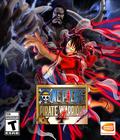
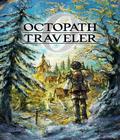
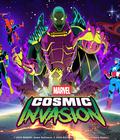
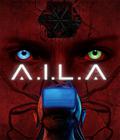
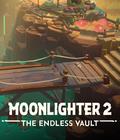
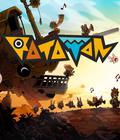
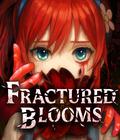

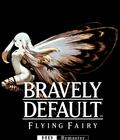 Bravely Default Flying Fairy HD Remaster is a traditional turn-based role-playing game, considered a spiritual successor to Final Fantasy: The 4 Heroes of Light.
Bravely Default Flying Fairy HD Remaster is a traditional turn-based role-playing game, considered a spiritual successor to Final Fantasy: The 4 Heroes of Light.




























